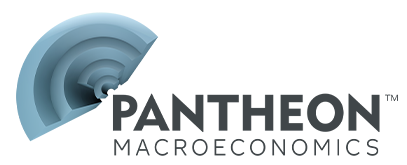- © 2025 Pantheon Macroeconomics
- Tel: +1 914 610 3830
Pantheon Macroeconomics
Best viewed on a device with a bigger screen...
Below is a list of our Publications for the last 5 months. If you are looking for reports older than 6 months please email info@pantheonmacro.com, or contact your account rep.
Please use the filters on the right to search for a specific date or topic.
Services disinflation is partly countering the tariff uplift to goods prices.
The June rise in core goods prices, ex-autos, was the biggest in three years; import-sensitive prices leapt...
...But only a quarter of the tariff costs has come through so far; expect even bigger price rises in July.
CPI services inflation will continue to cool, but it will offset only about half the pick-up in goods inflation.

independent macro research, Pantheon Macro, Pantheon Macroeconomics, independent research, ian shepherdson, economic intelligence